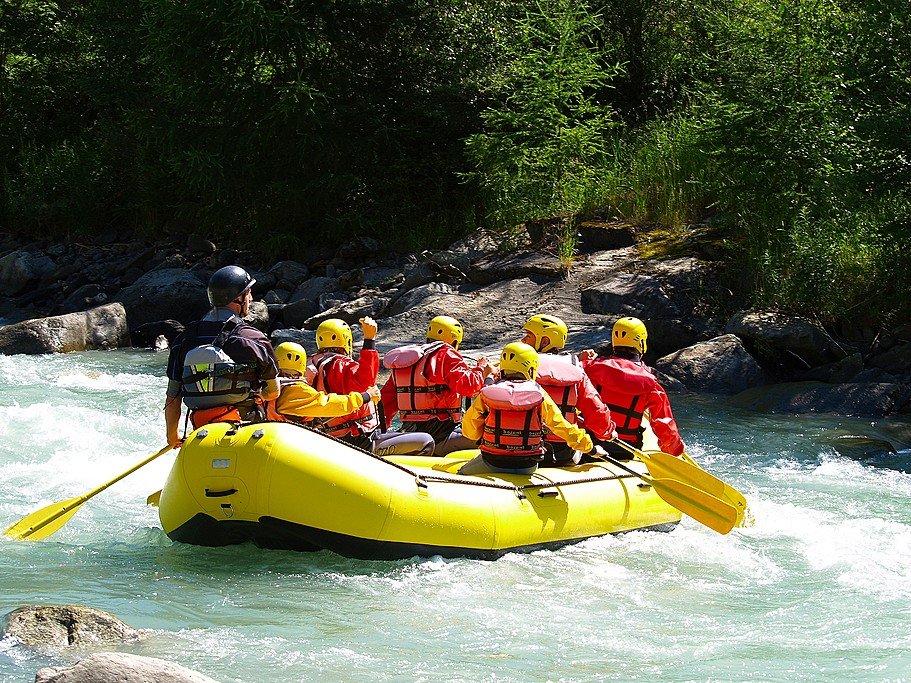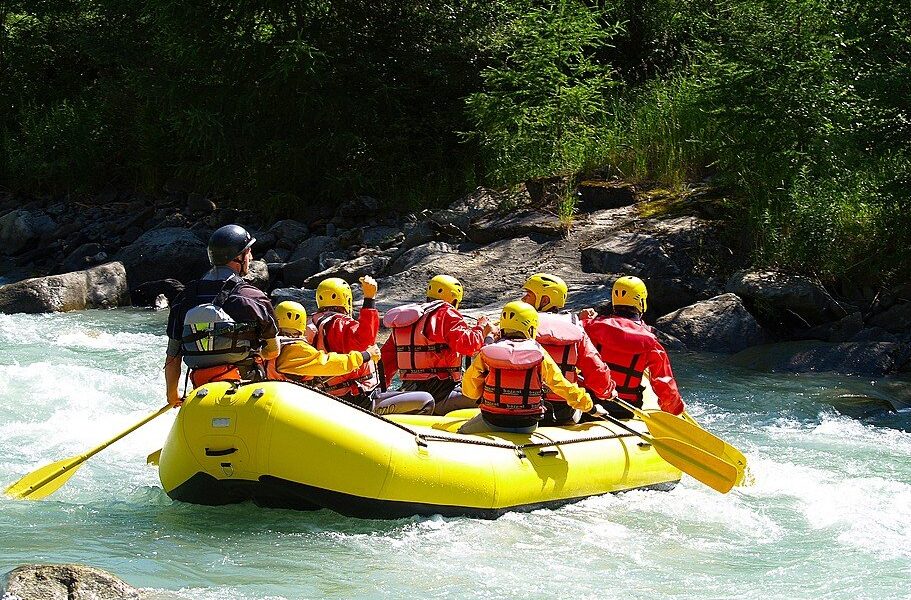
Costa Rica’s dry season is from November to April. But May signals the beginning of the rainy season, and it’s then that the rivers rise—making it the best time for aquatic adventurers of every skill level to hit the country’s rivers in search of whitewater.
## Whitewater Rafting in Costa Rica: A Comprehensive Guide
Costa Rica, a jewel of Central America, is renowned for its breathtaking landscapes and vibrant ecosystems. But beyond the rainforests and volcanoes lies a hidden treasure: its rivers. This country is exceptionally blessed with a remarkable network of waterways. Approximately 14 major river systems originate high in the mountainous interior, their waters cascading down slopes, carving through valleys, and ultimately flowing towards either the vast expanse of the Pacific Ocean or the inviting embrace of the Caribbean Sea. The unique geographical conditions create truly epic opportunities for a wide range of water activities. Costa Rica stands out as one of the premier whitewater rafting and kayaking destinations on the entire planet, attracting adventure seekers and nature enthusiasts from all corners of the globe.
The sheer diversity of rivers in Costa Rica means that even those who have never experienced the thrill of rafting before will find themselves spoiled for choice. There are options perfectly suited to every skill level, from gentle floats to exhilarating rapids. As a general rule, the higher you venture into the mountains, the wilder and more challenging the rivers become. This increased elevation translates directly into higher-class rapids, demanding greater skill and experience from rafters. Conversely, the rivers that meander through the lower elevations tend to be more docile and forgiving. These lower-altitude rivers often flow through incredibly lush vegetation and vibrant rainforests, which are teeming with exotic wildlife. This makes them ideal for combining a thrilling rafting experience with fantastic opportunities for wildlife spotting, offering a unique and unforgettable adventure.
This carefully curated list presents some of the very best rivers for rafting that Costa Rica has to offer, meticulously organized according to their classification and the corresponding skill level required. It’s important to note that commercial rafting operations in Costa Rica typically cater to levels up to Class IV rapids. This ensures a safe and enjoyable experience for participants. Conveniently, tours and excursions are widely available throughout the country. These expertly guided adventures typically encompass everything you need for a successful day on the water, including a knowledgeable guide, reliable transportation to and from the river, and satisfying meals to keep your energy levels high.
There is one particularly vital piece of information to keep in mind when planning your rafting trip to Costa Rica: the optimal time of year to embark on your aquatic adventure. The rainy season, which typically spans from May to November, is widely considered the best time to visit. During these months, the rivers swell to their highest levels, creating the most exhilarating and dynamic rafting conditions. The increased water flow amplifies the power of the rapids and transforming the rivers into truly unforgettable experiences.
If the thought of adventure on the water truly excites you, then you’ll be thrilled to discover the myriad of other aquatic activities that Costa Rica has to offer. This captivating country boasts an extensive range of experiences for water lovers of all kinds, providing endless opportunities to explore its beauty and embrace its adventurous spirit.
## Peñas Blancas River (Class I)
Starting on the gentlest end of the spectrum, the Peñas Blancas River offers an idyllic rafting trip that is perfectly suited for the entire family. Imagine embarking on a leisurely safari float, navigating a waterway where the rapids never exceed Class I. This signifies a slow-moving current, making it an incredibly safe and enjoyable experience for families with children of all ages, as well as anyone simply looking for a relaxing and laid-back ride through the heart of nature.
As you serenely drift down the river, you’ll be treated to a breathtaking spectacle of avian diversity. The Peñas Blancas River is renowned for its abundant bird species, offering incredible opportunities for birdwatching. Keep your eyes peeled for graceful herons wading in the shallows and majestic spectacled owls perched high in the trees. However, the birdlife is just the beginning. The banks of the Peñas Blancas River are also home to a diverse range of fascinating animals. Commonly spotted creatures include playful monkeys swinging through the trees, stealthy caimans basking in the sun, endearing sloths slowly making their way through the canopy, and intriguing long-nosed bats flitting about in the shadows. Each bend in the river reveals a new opportunity to witness the incredible biodiversity of Costa Rica.
If you’re hoping to craft a Costa Rica itinerary that includes even more kid-friendly activities, there are a number of wonderful options to consider. The possibilities are truly endless. And for travelers whose primary goal is to witness the amazing wildlife of Costa Rica, there are numerous resources available to guide you.
## Balsa River (Class II/III)
The Balsa River presents another compelling option for families seeking a memorable rafting experience in Costa Rica. While the minimum recommended age for rafters on the Balsa is slightly older than on some other rivers – typically around 10 years old – the experience is well worth the wait. The rapids are generally light, possessing just enough “attitude” to keep things exciting and engaging, but remaining perfectly manageable for families with slightly older children.
Rafters on the Balsa River can anticipate being immersed in stunning jungle scenery throughout their adventure. The typical trip lasts around four hours, providing ample time to soak in the lush surroundings and keep an eye out for the local wildlife. Monkeys are often spotted swinging through the trees, and sloths are frequently seen clinging to branches, adding an element of wonder and excitement to the journey.
One of the most significant factors that makes the Balsa River such a compelling destination is its proximity to La Fortuna, a vibrant town nestled at the foot of the majestic Arenal Volcano. La Fortuna serves as a central hub for adventure activities and nature exploration. This makes it exceptionally easy to combine a thrilling rafting trip on the Balsa with other exciting activities in the region.
## Reventazon River (Class II/III/IV)
For first-time rafters who are seeking a bold and unforgettable introduction to the world of whitewater, the Reventazon River might just be the perfect choice. This impressive river flows along the northeastern slope of the country before ultimately emptying into the Caribbean Sea. This strategic location makes it incredibly accessible from San José, the capital city of Costa Rica. This accessibility means that you can easily incorporate a thrilling rafting adventure into your travel plans, regardless of your base of operations.
The Reventazon River also possesses another unique advantage: it is one of the few rivers in Costa Rica that can be enjoyed year-round. Regardless of whether you visit during the wet season or the dry season, the quality of the rafting experience remains remarkably consistent. This ensures that you can enjoy the thrills and challenges of the Reventazon no matter what time of year you choose to visit.
Those who choose to accept the challenge of the Reventazon will be rewarded with some serious adrenaline rushes. This is especially true in the El Carmen section of the river, where the Class IV rapids are ranked as “moderately difficult.” Negotiating these rapids requires a combination of skill, teamwork, and a healthy dose of courage, making for an truly unforgettable adventure.
## Sarapiquí River (Class III/IV)
Venture north of San José, the capital city, into the heart of the central highlands, and you’ll discover the exhilarating rafting opportunities that await on the Sarapiquí River. This river is particularly well-suited for those who are looking for a multi-day rafting adventure, rather than a shorter afternoon excursion. A multi-day trip on the Sarapiquí allows you to truly immerse yourself in the natural beauty of the region.
The Sarapiquí River meanders between two stunning national parks: Parque Nacional Juan Castro Blanco and Parque Nacional Braulio Carrillo. This unique positioning ensures that you’re guaranteed to witness some truly stunning flora and fauna as you navigate the river. Keep your eyes peeled for exotic birds, playful monkeys, and a whole host of other fascinating creatures that call these protected areas home.
A particularly valuable tip for planning your Sarapiquí River adventure is to consider visiting during the months of June and October. During these months, the water levels are typically higher. This creates more intense and exciting rapids. Another recommendation is to specifically book a trip in the San Miguel section of the river, which is located in the Arajuela Province. This section is known for its continuous rapids, as well as captivating scenery. Here you’ll find lush jungle landscapes, cascading waterfalls, and other natural wonders.
## Río Toro (Class III/IV)
The Río Toro, aptly nicknamed the “bull river”, lives up to its name by offering a thrilling and adrenaline-pumping experience for adventure seekers. This river boasts an impressive series of approximately 45 continuous Class III/IV rapids. The relentless nature of these rapids provides a challenging and exhilarating ride from start to finish.
The typical rafting trip on the Río Toro covers a distance of approximately 10 miles and usually lasts around two and a half hours. This concentrated burst of adrenaline is packed with excitement and stunning scenery. During your ride, you’ll be treated to views of rugged tropical wilderness. You’ll pass by stunning waterfalls, dramatic river canyons, and an abundance of vibrant birdlife, including the iconic toucans.
While no prior rafting experience is required to tackle the Río Toro, it’s generally not recommended for children under the age of 13. The intensity of the rapids and the potential for a physically demanding experience make it more suitable for teenagers and adults. Like the Balsa River, the jumping-off point for the Río Toro is La Fortuna. This makes it a convenient option for those planning a broader adventure in the Arenal region.
## Pacuare River (Class III/IV)
When it comes to world-renowned rafting destinations, the Pacuare River undoubtedly earns its place among the elite. This river has garnered international acclaim and recognition. National Geographic even included it in their prestigious list of the 10 best river trips in the world. This recognition is a testament to the Pacuare’s unparalleled beauty, its thrilling rapids, and its exceptional overall rafting experience.
The Pacuare River stretches for an impressive 67 miles. It flows from the Talamanca Mountains, located in the southwest of the country, all the way to the Caribbean Sea. Along its winding course, the river traverses some of the most diverse and captivating topography in all of Costa Rica. Rafters on the Pacuare River not only get to experience the excitement of Class III/IV rapids but also get to enjoy calmer stretches. These sections wind through beautiful lowland rainforest, teeming with life.
Here, it’s not uncommon for rafters to spot a variety of tropical birds, playful monkeys swinging through the trees, elusive ocelots prowling the shadows, and, on rare occasions, even the majestic jaguar. The sheer abundance of wildlife, combined with the stunning scenery, makes the Pacuare River a truly unforgettable experience. Previous rafting experience is not required to navigate the Pacuare. This makes it accessible to a wide range of adventure seekers, from seasoned rafters to those looking to experience the thrill of whitewater for the first time.
B-535

